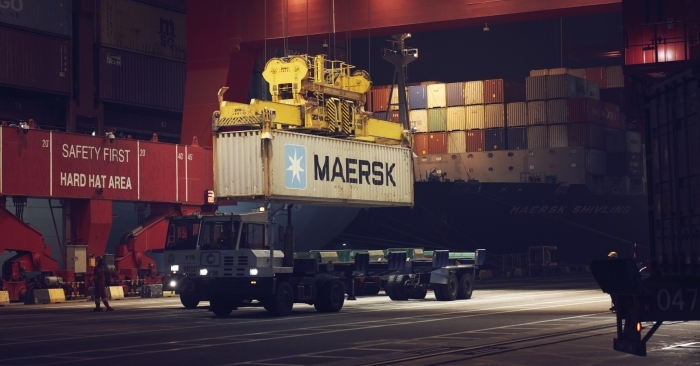Maersk reports nine-fold YoY net profit growth for Apr-Jun quarter
August 7, 2021: In the second quarter of 2021, A.P. Moller – Maersk's revenue grew 58 percent YoY to $14.2 billion from $8.9 billion in Q2 2020 and net profit grew 939 percent YoY to $3.7 billion from $359 million, bringing the net profit for the first half of 2021 to $6.5 billlion.

August 7, 2021: In the second quarter of 2021, A.P. Moller – Maersk's revenue grew 58 percent YoY to $14.2 billion from $8.9 billion in Q2 2020 and net profit grew 939 percent YoY to $3.7 billion from $359 million, bringing the net profit for the first half of 2021 to $6.5 billlion.
Sequentially, the revenue grew 14 percent from $12.4 billion in Q1 of 2021 and net profit grew from 37 percent from $2.7 billion. The shipping giant reported that the EBIT increased almost five times YoY to $4.1 billion while return on invested capital (ROIC) is now at 23.7 percent for the past 12 months.
In the ocean, profitability in Q2 was driven by revenue growth to $11.1 billion from $6.6 billion and EBIT increased to $3.6 billion from $0.5 billion. The growth came from a 15 percent rebound in volumes and an increase in average freight rates of 59 percent, as both long-term contracts rates with key clients increased and short-term contracts were still impacted by congestions and bottlenecks.
Logistics & Services delivered 38 percent revenue growth to $2.2 billion in Q2 with more than half coming from the top ocean customers. Demand was strong across all product families and consequently EBIT more than tripled to $153 million compared to $42 million in the same quarter last year, leading to an EBIT margin of 7.1 percent.
Also, Gateway Terminals had a strong Q2 with volumes rebounding 24 percent and persisting high storage income. Revenue increased to $969 million from $723 million last year, while EBIT doubled to $302 million leading to an EBIT margin of 31.1 percent.
Søren Skou of CEO A.P. Moller – Maersk, said, "The strong results benefited both from the exceptional circumstances in the ocean, where congestions and bottlenecks continued to drive up rates, and from solid progress in executing on our strategic transformation where we kept a firm focus on our customers need for integrated solutions across their supply chains.
"We continue to build a higher quality Ocean business with more long-term contracts, a rapidly growing logistics business, and a value-creating terminals business. Our exceptional earnings and high cash flow enable us to further accelerate our transformation, invest in growing our activities, also through acquisitions and at the same time return cash to shareholders. To that effect, we also announced today the acquisitions of Visible SCM and B2C Europe which complements our existing supply chain offering and addresses our customers need for e-commerce logistics."
Guidance for 2021
"The outlook for Q3 is strong and we expect that the current momentum in the ocean will continue into Q4, also benefitting our terminals business. Logistics & services will continue its strong growth pattern for the rest of the year. We have upgraded our guidance for 2021 to an underlying EBITDA of $18-19.5 billion, an EBIT of $14-15.5 billion and a free cash flow expected to be a minimum $11.5 billion," Søren Skou said.
The ocean is still expected to grow in line with global container demand, which is now expected to grow 6-8 percent in 2021 (previously 5-7 percent in 2021), still primarily driven by the export volumes out of China to the USA.
For 2021-2022, the expectation for the accumulated CAPEX remains to be around $7 billion.
Earnings in Q3 are expected to exceed the level for Q2 2021. Trading conditions for the quarters ahead are, however, still subject to higher-than-normal volatility due to the temporary nature of current demand patterns, disruptions in the supply chains and equipment shortages.



